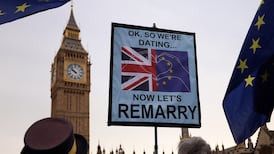The Government is due to unveil a new climate action plan shortly. It needs to detail how substantial cuts in carbon emissions will be achieved in coming years. It must outline how sectors will deliver under legally enforced targets, and show discipline in adhering to the necessary demands of Ireland’s first five-year carbon budget running up to 2025.
The 2021 Climate Act allows little room for manoeuvre with clear responsibilities for Ministers. Transport, energy and agriculture – Ireland’s worst carbon polluters – will in particular have to demonstrate they are on a path to sustained reduction in greenhouse gases. With agreed sectoral ceilings locked in by the Oireachtas, the days of vague commitments are over.
The plan has to strike a balance between hundreds of actions across the economy and key high-impact undertakings to build momentum up to 2030, so emissions are halved by the end of the decade, and to provide a strong platform for achieving net-zero before 2050.
Minister for Climate Eamon Ryan has been making bold promises of late, suggesting for instance that Ireland could, by 2025, power itself on a sunny day by solar power alone, while insisting the right climate policies are in place and the plan will “deliver the scale of change” needed.
READ MORE
But, as the Climate Change Advisory Council has warned, delivery is lagging way behind promised targets. Almost a quarter of actions – 166 measures – in the Government’s current plan have been delayed, as of the end of September, according to the latest update. Delayed “high-impact” measures include developing plans for managing the environmental footprint of the beef and dairy sectors; the rollout of a strategy to increase uptake of EVs; and determining the best way to develop district heating systems.
High-impact wins included planning exemptions for solar panels, energy demand management measures for large users, afforestation projects and enacting the Circular Economy Bill.
The window to deliver the first carbon budget is closing rapidly. One-third of the budget period has passed, but emissions are still rising in some sectors and merely plateauing in others. Emissions rose by 5 per cent last year and could rise again in 2022. Far greater annual reductions will be necessary in future years to stay under budget, potentially up to 14 per cent in 2023, 2024 and 2025. This is the nature of climate policy based on emissions budgets rather than targets: delayed early action necessitates steeper cuts later.
It is still possible to stay within budget, but it will only be achieved with bold and immediate action. It remains to be seen if the Government has the courage to do so. It should be mindful of Ireland’s EU emissions reduction obligations, in a scenario where emission levels indicate that Ireland is not among climate action leaders.













